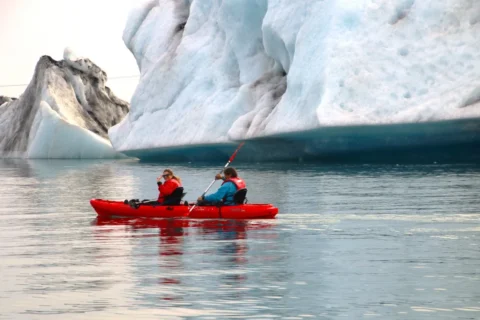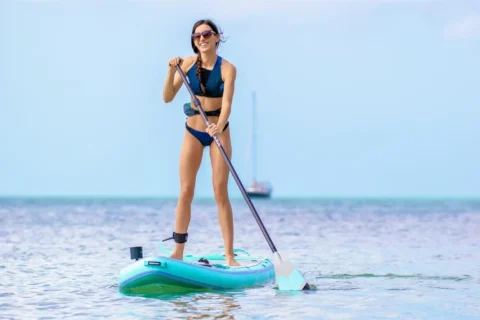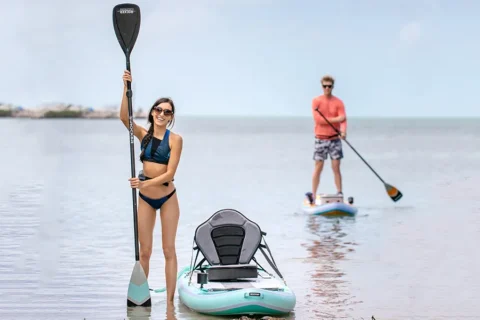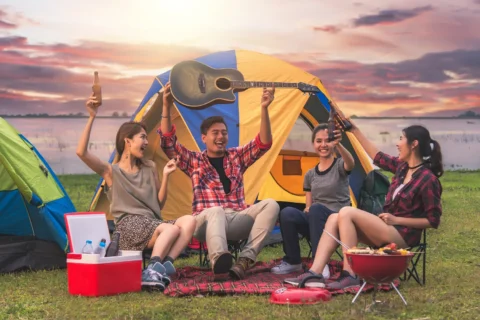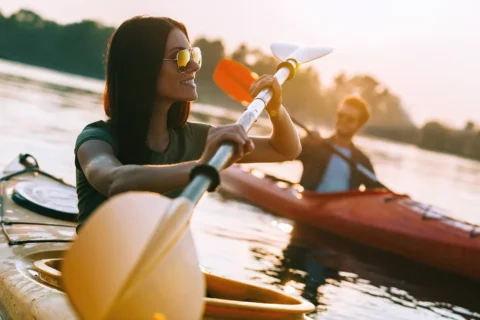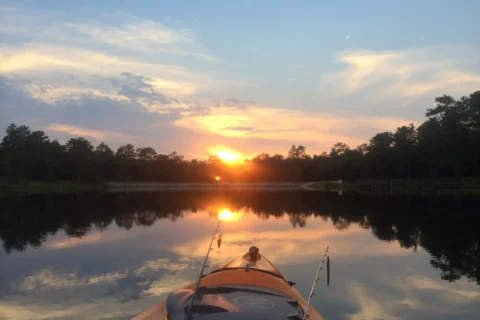Pedal kayaks are revolutionizing the way people experience the water. Combining the tranquility of kayaking with the ease of pedaling, these innovative vessels offer a unique and enjoyable way to navigate lakes, rivers, and coastal waters. Whether you’re an avid angler, a fitness enthusiast, or someone looking for a new recreational activity, pedal kayaks have something to offer. This comprehensive guide will delve into everything you need to know about pedal kayaks, from their design and benefits to tips for choosing the right one and getting started on the water.
Table of Contents
- Introduction to Pedal Kayaks
- History and Evolution of Pedal Kayaks
- How Pedal Kayaks Work
- Benefits of Pedal Kayaks
- Types of Pedal Kayaks
- Choosing the Right Pedal Kayak
- Essential Gear and Accessories
- Pedal Kayak Maintenance and Care
- Safety Tips for Pedal Kayaking
- Popular Pedal Kayak Destinations
- Pedal Kayak Fishing: Tips and Techniques
- Fitness and Health Benefits of Pedal Kayaking
- Environmental Impact and Sustainability
- Frequently Asked Questions
- Conclusion
1. Introduction to Pedal Kayaks
Pedal kayaks are a relatively new addition to the world of kayaking, offering an alternative to traditional paddle-powered kayaks. Instead of using a paddle, pedal kayaks are equipped with a pedal-driven propulsion system, allowing the user to move forward by pedaling with their feet. This hands-free operation opens up a world of possibilities for kayakers, providing a more efficient and versatile way to explore the water.
2. History and Evolution of Pedal Kayaks
The concept of pedal-powered watercraft dates back to the early 19th century, but modern pedal kayaks have only become popular in the past few decades. Early designs were bulky and inefficient, but advancements in materials and engineering have led to the sleek, efficient pedal kayaks we see today. Companies like Hobie and Native Watercraft have been at the forefront of this evolution, introducing innovative designs that have transformed the kayaking experience.
3. How Pedal Kayaks Work
Pedal kayaks use a pedal-driven propulsion system, typically involving a set of pedals connected to a propeller or fins. Here’s a closer look at the main components and how they work:
- Pedal System: The user operates the pedals with their feet, similar to a bicycle.
- Drive Unit: The pedals are connected to a drive unit, which translates the pedaling motion into propulsion.
- Propeller or Fins: The drive unit powers either a propeller or a set of fins, which push the kayak forward through the water.
- Steering System: Most pedal kayaks are equipped with a rudder controlled by hand, allowing the user to steer the kayak.
4. Benefits of Pedal Kayaks
Pedal kayaks offer numerous benefits over traditional paddle kayaks, making them an attractive option for a wide range of users:
4.1 Hands-Free Operation
One of the most significant advantages of pedal kayaks is the hands-free operation. This is especially beneficial for anglers, photographers, and anyone who wants to keep their hands free for other activities while kayaking.
4.2 Efficiency and Speed
Pedal kayaks can be more efficient and faster than paddle kayaks, as the legs are stronger and more powerful than the arms. This allows users to cover more distance with less effort.
4.3 Stability and Comfort
Pedal kayaks are generally designed with stability in mind, making them suitable for beginners and experienced kayakers alike. The seating position is often more comfortable, with ergonomic designs that reduce strain on the back and shoulders.
4.4 Versatility
Whether you’re fishing, exploring, or exercising, pedal kayaks offer versatility for various activities. They can be used in different water conditions, from calm lakes to coastal waters.
5. Types of Pedal Kayaks
Pedal kayaks come in various designs to suit different needs and preferences. Here are the main types:
5.1 Recreational Pedal Kayaks
These kayaks are designed for casual paddling and short trips. They are generally more affordable and easy to use, making them ideal for beginners and leisure kayakers.
5.2 Fishing Pedal Kayaks
Fishing pedal kayaks are equipped with features specifically for anglers, such as rod holders, tackle storage, and fish finders. They offer stability and hands-free operation, allowing anglers to focus on fishing.
5.3 Touring Pedal Kayaks
Touring pedal kayaks are built for long-distance paddling and open water conditions. They are often sleeker and more efficient, with storage compartments for gear and supplies.
5.4 Tandem Pedal Kayaks
Tandem pedal kayaks are designed for two people, making them a great option for couples, friends, or families who want to paddle together. They offer shared propulsion and are often more stable.
6. Choosing the Right Pedal Kayak
Selecting the right kayak involves considering several factors:
6.1 Purpose
Determine how you plan to use the kayak. Are you interested in fishing, touring, or casual paddling? Different kayaks are designed for specific activities.
6.2 Budget
Pedal kayaks can vary significantly in price. Set a budget and look for options that offer the best value for your money.
6.3 Size and Weight
Consider the size and weight of the kayak, especially if you need to transport it. Ensure it fits your storage space and vehicle.
6.4 Comfort and Features
Look for features that enhance comfort and convenience, such as adjustable seats, ample storage, and easy-to-use controls.
6.5 Test Paddle
If possible, test paddle different models to find one that feels comfortable and suits your needs.
7. Essential Gear and Accessories
Having the right gear and accessories can enhance your pedal kayaking experience:
7.1 Personal Flotation Device (PFD)
A properly fitting PFD is essential for safety. Choose one designed for kayaking that allows freedom of movement.
7.2 Paddle
Even with a pedal kayak, having a paddle on board is useful for maneuvering in tight spaces or emergencies.
7.3 Dry Bags
Dry bags keep your belongings safe and dry. They are essential for storing items like clothing, electronics, and snacks.
7.4 Anchor System
An anchor system can be useful for fishing or staying in one spot. It prevents the kayak from drifting with the current or wind.
7.5 Sun Protection
Wear a hat, sunglasses, and sunscreen to protect yourself from the sun. Long sleeves and pants can also provide additional protection.
7.6 Fish Finder and GPS
For anglers, a fish finder and GPS can enhance the fishing experience by locating fish and navigating to the best spots.
8. Pedal Kayak Maintenance and Care
Proper maintenance ensures your pedal kayak remains in good condition for years to come:
8.1 Cleaning
Rinse the kayak with fresh water after each use to remove salt, dirt, and debris. Use mild soap and water for a deeper clean.
8.2 Inspecting and Lubricating
Regularly inspect the pedal drive system, rudder, and other moving parts for wear and tear. Lubricate as needed to keep them functioning smoothly.
8.3 Storage
Store your kayak in a cool, dry place away from direct sunlight. Use a cover to protect it from dust and UV rays.
8.4 Repairs
Address any damage promptly to prevent it from worsening. Small cracks or punctures can often be repaired with a kayak repair kit.
9. Safety Tips for Pedal Kayaking
Safety should always be a priority when pedal kayaking:
9.1 Wear a PFD
Always wear a PFD, regardless of your skill level or the water conditions.
9.2 Check the Weather
Check the weather forecast before heading out. Avoid kayaking in severe weather or strong winds.
9.3 Inform Someone
Let someone know your plans, including where you’re going and when you expect to return.
9.4 Stay Hydrated
Bring plenty of water and stay hydrated, especially on hot days.
9.5 Know Your Limits
Don’t push yourself beyond your limits. If you’re tired or conditions become challenging, head back to shore.
10. Popular Pedal Kayak Destinations
Exploring new destinations can enhance your pedal kayaking experience. Here are some popular spots:
10.1 Coastal Waters
Coastal areas offer diverse landscapes, from sandy beaches to rocky shorelines. Popular destinations include the Florida Keys, California’s Monterey Bay, and the Maine coast.
10.2 Lakes
Lakes provide calm waters ideal for leisurely paddling. Consider destinations like Lake Tahoe, the Great Lakes, and Crater Lake.
10.3 Rivers
Rivers offer a mix of calm stretches and gentle rapids. Explore the Mississippi River, the Colorado River, or the Hudson River for a unique experience.
10.4 National Parks
Many national parks have beautiful waterways perfect for kayaking. Visit parks like Everglades National Park, Yellowstone National Park, and Olympic National Park.
11. Pedal Kayak Fishing: Tips and Techniques
Pedal kayaks are especially popular among anglers. Here are some tips and techniques for successful fishing:
11.1 Choosing the Right Gear
Select fishing gear suited to the type of fish you’re targeting. Consider rod holders, tackle boxes, and fish finders as essential accessories.
11.2 Understanding Fish Behavior
Learn about the habits and habitats of the fish species you’re targeting. This knowledge can help you choose the best fishing



